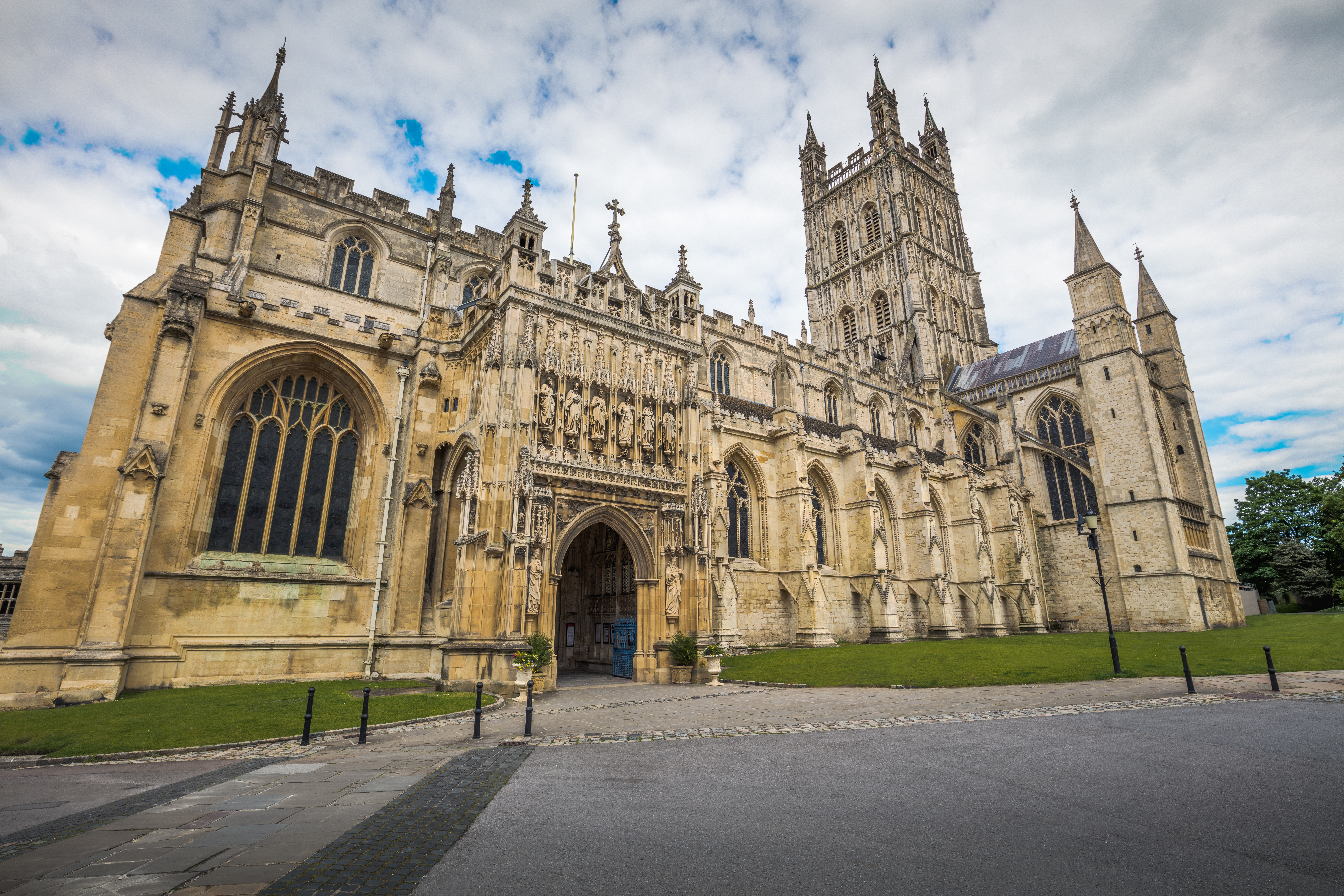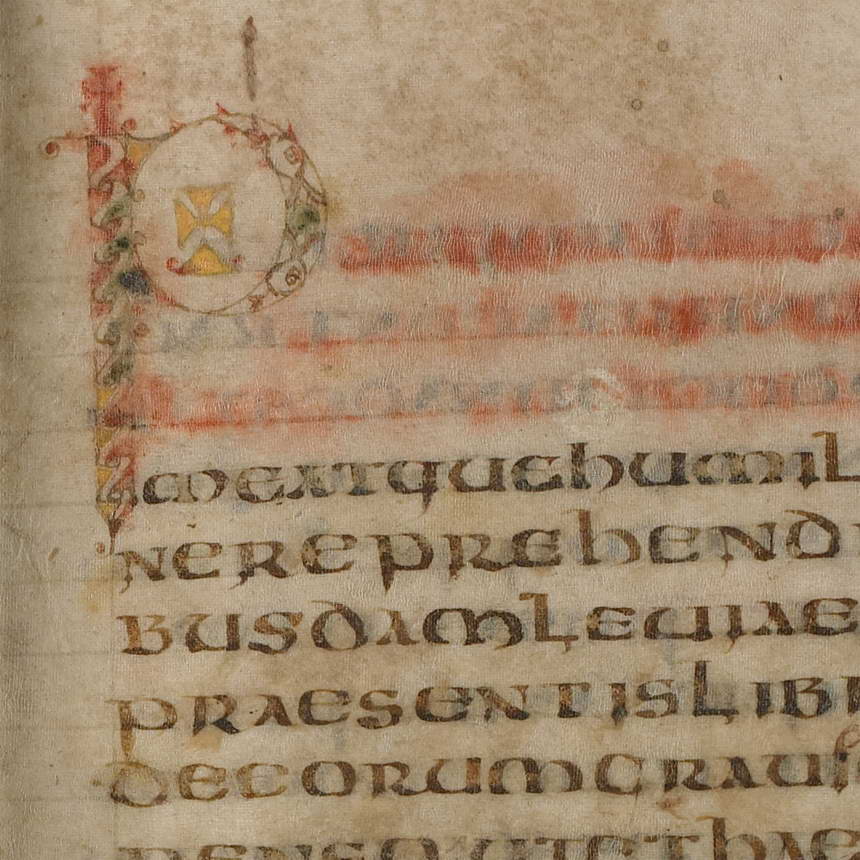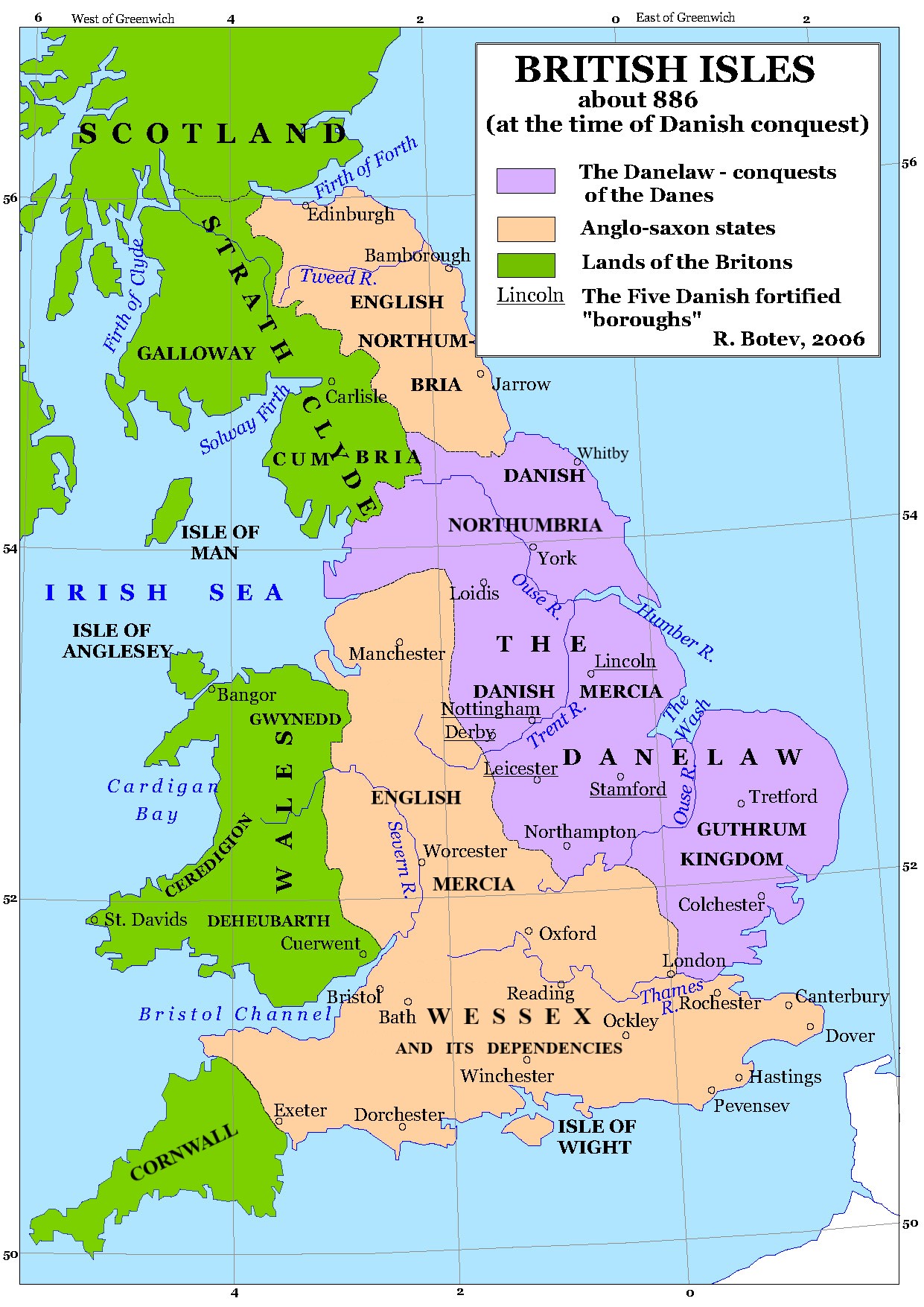|
890 Deaths
__NOTOC__ Year 890 ( DCCCXC) was a common year starting on Thursday of the Julian calendar, the 890th year of the Common Era (CE) and Anno Domini (AD) designations, the 890th year of the 1st millennium, the 90th year of the 9th century, and the 1st year of the 890s decade. Events By place Europe * The Frankish nobles, who have ruled Provence in anarchy (since 887), declare Louis the Blind (a son of the late usurper King Boso) ruler of Lower Burgundy, at an assembly at Valence. * The sovereignty of Svatopluk I, ruler (''knyaz'') of Moravia, is confirmed in Bohemia. Lusatia becomes a part of his kingdom (approximate date). Britain * King Alfred the Great begins to commission and undertake a series of translations into Old English, beginning with his own version of Pope Gregory the Great's ''Pastoral Care''. * Lord Æthelred II and Lady Æthelflæd (a daughter of Alfred the Great) of the Mercians found the Priory of St. Oswald in Gloucester (probably originally d ... [...More Info...] [...Related Items...] OR: [Wikipedia] [Google] [Baidu] |
Svatopluk I
Svatopluk I or Svätopluk I, also known as Svatopluk the Great, was a ruler of Great Moravia, which attained its maximum territorial expansion during his reign (870–871, 871–894). Svatopluk's career started in the 860s, when he governed a principality within Moravia, the location of which is still a matter of debate among historians, under the suzerainty of his uncle, Rastislav. In 870 Svatopluk dethroned Rastislav, who was a vassal of Louis the German, and betrayed him to the Franks. Within a year, however, the Franks also imprisoned Svatopluk. After the Moravians rebelled against the Franks, Svatopluk was released and led the rebels to victory over the invaders. Although he was obliged to pay tribute to East Francia under the peace treaty concluded at Forchheim (Germany) in 874, he was able to expand his territories outside the Franks' sphere of interest in the following years. His forces even invaded the March of Pannonia within East Francia in 882. Svatopluk esta ... [...More Info...] [...Related Items...] OR: [Wikipedia] [Google] [Baidu] |
Gloucester
Gloucester ( ) is a cathedral city, non-metropolitan district and the county town of Gloucestershire in the South West England, South West of England. Gloucester lies on the River Severn, between the Cotswolds to the east and the Forest of Dean to the west; it is sited from Monmouth, from Bristol, and east of the England and Wales border, border with Wales. Gloucester has a population of around 132,000, including suburban areas. It is a port, linked via the Gloucester and Sharpness Canal to the Severn Estuary. Gloucester was founded by the Roman Empire, Romans and became an important city and ''Colonia (Roman), colony'' in AD 97, under Nerva, Emperor Nerva as ''Glevum, Colonia Glevum Nervensis''. It was granted its first charter in 1155 by Henry II of England, Henry II. In 1216, Henry III of England, Henry III, aged only nine years, was crowned with a gilded iron ring in the Chapter House of Gloucester Cathedral. Gloucester's significance in the Middle Ages is unde ... [...More Info...] [...Related Items...] OR: [Wikipedia] [Google] [Baidu] |
St Oswald's Priory, Gloucester
St Oswald's Priory was founded by Æthelflæd, daughter of Alfred the Great, and her husband Æthelred, ealdorman of Mercia, in the late 880s or the 890s.Heighway, p. 103St Oswald's Priory, English Heritage It appears to have been an exact copy of the Old Minster, Winchester It is a Grade I listed building. The site was an important part of the Burh of Gloucester and was supported by the ruling family of the time including king Æthelstan. From the 11th century its importance declined, becoming a minor house of Canons regular until suppression in 1536. The building was damaged during the English Civil War and largely demolished in 1643. History Foundation St Peter's Abbey had been founded in Gloucester about 679 by Osric, ruler of the Hwicce, and at the end of the ninth century Æthelflæda, daughter of King Alfred, founded a new minster at a different location in Gloucester, also initially dedicated to St Peter. In 909 a combined West Saxon and Mercian raid into Danish t ... [...More Info...] [...Related Items...] OR: [Wikipedia] [Google] [Baidu] |
Mercia
Mercia (, was one of the principal kingdoms founded at the end of Sub-Roman Britain; the area was settled by Anglo-Saxons in an era called the Heptarchy. It was centred on the River Trent and its tributaries, in a region now known as the Midlands of England. The royal court moved around the kingdom without a fixed capital city. Early in its existence Repton seems to have been the location of an important royal estate. According to the ''Anglo-Saxon Chronicle'', it was from Repton in 873–874 that the Great Heathen Army deposed the King of Mercia. Slightly earlier, Offa of Mercia, King Offa seems to have favoured Tamworth, Staffordshire, Tamworth. It was there where he was crowned and spent many a Christmas. For the three centuries between 600 and 900, known as Mercian Supremacy or the "Golden Age of Mercia", having annexed or gained submissions from five of the other six kingdoms of the Heptarchy (Kingdom of East Anglia, East Anglia, Kingdom of Essex, Essex, Kingdom of Kent, K ... [...More Info...] [...Related Items...] OR: [Wikipedia] [Google] [Baidu] |
Æthelflæd
Æthelflæd ( – 12 June 918) ruled as Lady of the Mercians in the English Midlands from 911 until her death in 918. She was the eldest child of Alfred the Great, king of the Anglo-Saxon kingdom of Wessex, and his wife Ealhswith. Æthelflæd was born around 870 at the height of the Viking Age, Viking invasions of England in the Middle Ages, England. By 878, most of England was under Danish Viking rule – Kingdom of East Anglia, East Anglia and Northumbria having been conquered, and Mercia partitioned between the English and the Vikings – but in that year Alfred won a crucial victory at the Battle of Edington. Soon afterwards the English-controlled western half of Mercia came under the rule of Æthelred, Lord of the Mercians, who accepted Alfred's overlordship. Alfred adopted the title King of the Anglo-Saxons (previously he was titled King of the West Saxons like his predecessors) claiming to rule all Anglo-Saxon people not living in areas under Viking control. In the mid-8 ... [...More Info...] [...Related Items...] OR: [Wikipedia] [Google] [Baidu] |
Æthelred, Lord Of The Mercians
Æthelred (died 911) became Lord of the Mercians in England shortly after the death or disappearance of Mercia's last king, Ceolwulf II, in 879. He is also sometimes called the Ealdorman of Mercia. Æthelred's rule was confined to the western half, as eastern Mercia was then part of the Viking-ruled Danelaw. His ancestry is unknown. He was probably the leader of an unsuccessful Mercian invasion of Wales in 881, and soon afterwards he acknowledged the lordship of King Alfred the Great of Wessex. This alliance was cemented by the marriage of Æthelred to Alfred's daughter Æthelflæd. In 886, Alfred took possession of London, which had suffered greatly from several Viking occupations. Alfred then handed London over to Æthelred, as it had traditionally been a Mercian town. In 892, the Vikings renewed their attacks, and the following year, Æthelred led an army of Mercians, West Saxons and Welsh to victory over a Viking army at the Battle of Buttington. He spent the next thre ... [...More Info...] [...Related Items...] OR: [Wikipedia] [Google] [Baidu] |
Pastoral Care
''The Book of Pastoral Rule'' (Latin: ''Liber Regulae Pastoralis'', ''Regula Pastoralis'' or ''Cura Pastoralis'' — sometimes translated into English ''Pastoral Care'') is a treatise on the responsibilities of the clergy written by Pope Gregory I around the year 590, shortly after his papal inauguration. It became one of the most influential works on the topic ever written. The title was that used by Gregory when sending a copy to his friend Leander of Seville. The text was addressed to John, the bishop of Ravenna, as a response to a query from him. Gregory later revised the text somewhat. Description The personal, intellectual and moral standards Gregory enjoined parish priests to possess, though noble, were considered in certain quarters to be unrealistic given the limitations imposed by 6th century realities. For example, one letter from the Bishop of Cartagena (Book II, letter 54 in Gregory's collected correspondence) praises the book, but expresses a reserve that i ... [...More Info...] [...Related Items...] OR: [Wikipedia] [Google] [Baidu] |
Pope Gregory I
Pope Gregory I (; ; – 12 March 604), commonly known as Saint Gregory the Great (; ), was the 64th Bishop of Rome from 3 September 590 until his death on 12 March 604. He is known for instituting the first recorded large-scale mission from Rome, the Gregorian mission, to convert the then largely pagan Anglo-Saxons to Christianity. Gregory is also well known for his writings, which were more prolific than those of any of his predecessors as pope. The epithet Saint Gregory the Dialogist has been attached to him in Eastern Christianity because of his '' Dialogues''. English translations of Eastern texts sometimes list him as Gregory "Dialogos" from the Greek (''dialogos'', conversation), or the Anglo-Latinate equivalent "Dialogus". He is the second of the three Popes listed in the ''Annuario Pontificio'' with the title "the Great", alongside Popes Leo I and Nicholas I. A Roman senator's son and himself the prefect of Rome at 30, Gregory lived in a monastery that he establish ... [...More Info...] [...Related Items...] OR: [Wikipedia] [Google] [Baidu] |
Old English
Old English ( or , or ), or Anglo-Saxon, is the earliest recorded form of the English language, spoken in England and southern and eastern Scotland in the Early Middle Ages. It developed from the languages brought to Great Britain by Anglo-Saxon settlers in the mid-5th century, and the first Old English literature dates from the mid-7th century. After the Norman Conquest of 1066, English was replaced for several centuries by Anglo-Norman language, Anglo-Norman (a langues d'oïl, type of French) as the language of the upper classes. This is regarded as marking the end of the Old English era, since during the subsequent period the English language was heavily influenced by Anglo-Norman, developing into what is now known as Middle English in England and Early Scots in Scotland. Old English developed from a set of Anglo-Frisian or Ingvaeonic dialects originally spoken by Germanic tribes traditionally known as the Angles (tribe), Angles, Saxons and Jutes. As the Germanic settlers ... [...More Info...] [...Related Items...] OR: [Wikipedia] [Google] [Baidu] |
Alfred The Great
Alfred the Great ( ; – 26 October 899) was King of the West Saxons from 871 to 886, and King of the Anglo-Saxons from 886 until his death in 899. He was the youngest son of King Æthelwulf and his first wife Osburh, who both died when Alfred was young. Three of Alfred's brothers, Æthelbald, King of Wessex, Æthelbald, Æthelberht, King of Wessex, Æthelberht and Æthelred I of Wessex, Æthelred, reigned in turn before him. Under Alfred's rule, considerable administrative and military reforms were introduced, prompting lasting change in England. After ascending the throne, Alfred spent several years fighting Viking invasions. He won a decisive victory in the Battle of Edington in 878 and made an agreement with the Vikings, dividing England between Anglo-Saxon territory and the Viking-ruled Danelaw, composed of Scandinavian York, the north-east Midlands and East Anglia. Alfred also oversaw the conversion of Viking leader Guthrum to Christianity. He defended his kingdom again ... [...More Info...] [...Related Items...] OR: [Wikipedia] [Google] [Baidu] |
Lusatia
Lusatia (; ; ; ; ; ), otherwise known as Sorbia, is a region in Central Europe, formerly entirely in Germany and today territorially split between Germany and modern-day Poland. Lusatia stretches from the Bóbr and Kwisa rivers in the east to the Pulsnitz and Black Elster rivers in the west, and is located within the German states of Saxony and Brandenburg as well as in the Polish voivodeships of Lower Silesia and Lubusz. Major rivers of Lusatia are the Spree and the Lusatian Neisse, which defines the border between Germany and Poland. The Lusatian Mountains of the Western Sudetes separate Lusatia from Bohemia (Czech Republic) in the south. Lusatia is traditionally divided into Upper Lusatia, the hilly southern part, and Lower Lusatia, the flat northern part. The areas east and west along the Spree in the German part of Lusatia are home to the Slavic Sorbs, one of Germany’s four officially recognized indigenous ethnic minorities. The Upper Sorbs inhabit Saxon U ... [...More Info...] [...Related Items...] OR: [Wikipedia] [Google] [Baidu] |






